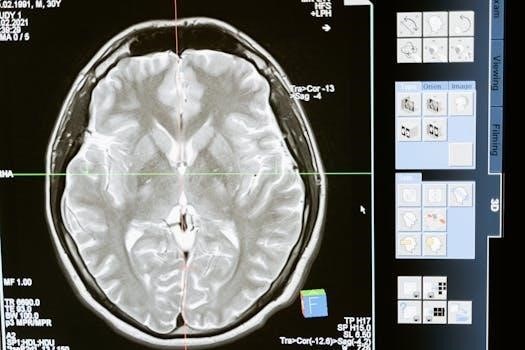Understanding the Novice 27 Dressage Test

The Novice 27 test is a British Dressage standard, designed to evaluate horse and rider combinations at the novice level. It emphasizes transitions, correct training, and includes specific movements like half circles. It is one of the newer style tests, making it a good introduction to more complex dressage.
What is the Novice 27 Dressage Test?
The Novice 27 Dressage Test is a specific evaluation within the British Dressage (BD) framework, aimed at assessing the basic training and partnership between horse and rider at the novice level. It serves as a stepping stone for riders progressing from introductory tests, introducing more complex movements and transitions. This test focuses on the fundamental principles of dressage, including rhythm, suppleness, and contact. It evaluates the horse’s ability to perform movements with balance, accuracy, and obedience, while the rider is judged on their effectiveness in guiding the horse. The Novice 27 test, while relatively straightforward, requires a good understanding of basic dressage principles and a harmonious partnership. It’s a key test for those aiming to progress within the British Dressage system and is often used in affiliated and unaffiliated competitions. It emphasizes the importance of correct training, clear aids, and a consistent performance. This test helps riders and trainers to check the horse’s level of training, and identify any areas for improvement. The test includes a variety of movements that evaluate overall development.
Origin of the Novice 27 Test
The Novice 27 Dressage Test was introduced by British Dressage (BD) as part of their structured approach to training and competition. It’s a relatively newer test compared to some other novice-level tests, reflecting the evolution of dressage principles and the increasing focus on correct training. As a product of British Dressage, it adheres to the standards and philosophy of the organization. The test was designed to provide a clear path for riders progressing through the ranks, setting a benchmark for novice-level competence. The exact date of its introduction is not always readily available, but it has become a standard test used across affiliated and unaffiliated competitions. It replaced older tests with more modern approaches, taking into account the evolution of riding and training methods. Its inclusion in the BD framework means that it’s been through a rigorous development process, ensuring that the test is fair and progressive for riders and their horses. The test is a part of the continuous development of equestrian sports.
Format of the Test
The Novice 27 test is designed to be ridden in a standard 20m x 60m arena. It comprises a series of movements performed in a specific sequence, testing the horse’s suppleness, obedience, and the rider’s accuracy. The test begins with the entry at A and proceeds down the center line, with movements typically involving changes of pace, direction, and figures within the arena. Each movement is assigned a score by a judge, with a maximum total score possible, emphasizing the importance of precision and quality of performance. Transitions between gaits are also assessed, highlighting the horse’s responsiveness to the rider’s aids. The test incorporates both working trot and canter and includes specific figures such as half 10-meter circles and diagonals. The format of Novice 27 is designed to be progressive, building up from simple to more complex movements. It also assesses the rider’s ability to maintain impulsion and balance, and the horse’s acceptance of the aids. The test’s structure tests the partnership between horse and rider.

Key Movements in Novice 27
The Novice 27 test includes several key movements such as half 10m circles at E and B, medium trot, and changing the rein across the diagonal in canter. These test the horse and rider’s skill and training.
Half 10m Circles at E and B
The half 10-meter circles at E and B are crucial elements within the Novice 27 dressage test. These movements require precise riding and clear communication between horse and rider. Executing these circles correctly demonstrates the horse’s suppleness and responsiveness to the rider’s aids. The rider must maintain a consistent bend and rhythm throughout the circle, ensuring the horse remains balanced and on the bit. The circles test the horse’s ability to maintain a consistent frame while working on a smaller curve, showing control and obedience. These circles are not just about going around but showcasing the horse’s ability to bend and move correctly. Furthermore, the accuracy of the placement of these circles is important, hitting the correct point on the arena. The rider must also maintain a consistent pace, not allowing the horse to speed up or slow down. The transitions into and out of the circles must be smooth, demonstrating a good level of control and training. These movements are a fundamental part of the test and a good execution earns significant marks. It reflects the level of partnership and training between horse and rider, and is a key area for judges to evaluate.
Medium Trot
The medium trot in the Novice 27 dressage test is a key movement that assesses the horse’s ability to lengthen its stride while maintaining balance and rhythm. This is not about speed, but about the horse covering more ground with each step, showing an increase in impulsion from behind. The horse should maintain a consistent tempo and frame throughout the medium trot, demonstrating a clear difference from the working trot. The rider should encourage the horse to reach forward and stretch into the contact, maintaining a light and elastic connection. A good medium trot showcases the horse’s power and suppleness. It shows the horse’s ability to engage the hindquarters and reach forward with the forelegs. The transition into and out of the medium trot should be smooth and controlled, without any loss of balance or rhythm. The rider must maintain the horse on the bit and maintain good self-carriage. The horse should remain straight and balanced, without drifting to the side. The medium trot is a good indicator of the horse’s overall training and athleticism, it also requires a good degree of rider skill to execute correctly. Judges will look for a clear difference between the working and medium trot and will reward a horse with good impulsion and stride length. The quality of this movement reflects the horse’s training and rider’s effectiveness.
Change the Rein Across the Diagonal in Canter
The change of rein across the diagonal in canter is a key movement within the Novice 27 dressage test, designed to assess the horse’s balance, straightness, and the rider’s control. This movement requires the horse to maintain a consistent canter rhythm and tempo throughout the diagonal line. The rider should ensure the horse is straight from shoulder to hindquarter when approaching the diagonal. The change of rein should be executed with a smooth, controlled transition onto the diagonal line, maintaining impulsion and balance. The horse should be encouraged to move straight across the arena and not deviate to the left or the right. The rider should focus on guiding the horse through the correct line with subtle aids and maintaining a light, even contact. The horse should maintain a consistent frame and be responsive to the rider’s aids. It’s important that the horse does not lose impulsion or rhythm on the diagonal. A good change of rein demonstrates the horse’s ability to maintain balance and straightness whilst changing direction. The rider’s control is also assessed through the quality of this movement. It should demonstrate the horse’s suppleness and the rider’s ability to maintain control. The rider should prepare the horse before executing this movement, and maintain good posture and balance, maintaining an elastic connection with the horse’s mouth. The change of rein should be accurate.
Give and Retake the Reins in Canter
The give and retake the reins in canter, featured in the Novice 27 test, is an important movement that demonstrates the horse’s self-carriage, balance, and the rider’s sensitive hands. This element requires the rider to briefly release the contact on the reins while maintaining a consistent canter rhythm. The rider must then re-establish the connection with the horse’s mouth smoothly and without disturbing the horse’s balance or impulsion. The horse should maintain its own balance, rhythm and frame, without any loss of impulsion. The rider must ensure that the release of the reins is done gently, and that the re-establishment is equally soft, without causing any sudden or jerky movements. The horse must remain light in the mouth and responsive. The rider should have a secure seat and use their leg aids to maintain the canter. The purpose of this movement is to display the horse’s ability to maintain its way of going and self-carriage. It also shows the rider’s ability to influence the horse without relying on constant rein contact. This movement assesses the sensitivity of both horse and rider and highlights the horse’s level of training. The transition should be smooth and the horse’s balance should not be compromised. The rider should maintain impulsion throughout the exercise. It’s a test of the horse’s responsiveness.
Trot-Walk-Trot Transitions
The trot-walk-trot transitions are a fundamental aspect of the Novice 27 dressage test, assessing the horse’s responsiveness to the rider’s aids and the smoothness of the changes. These transitions are not just about changing gaits, but also about maintaining balance, rhythm, and connection throughout. The rider must demonstrate clear and precise aids, ensuring that the horse responds promptly and without hesitation. The transition from trot to walk should be smooth and balanced, with the horse maintaining a soft contact. The walk should be active, with clear four-beat rhythm, and the horse should maintain a consistent outline. The subsequent transition back to trot should be equally seamless, with the horse moving forward willingly and retaining its balance and impulsion. This exercise evaluates the horse’s suppleness and obedience as well as the rider’s skill. These transitions need to be executed with precision, highlighting the horse’s training and the rider’s ability to effectively communicate through their aids. The horse should be engaged and responsive, showing that it is listening to the rider’s commands. The transitions should be fluid, not abrupt, indicating the partnership between horse and rider. The transitions should be performed with attention to the quality of each gait, not just the change between them. The horse should show self-carriage throughout.

Resources for Novice 27
For the Novice 27 test, resources include British Dressage official test sheets, diagrams, and various shop options. These resources aid riders in understanding and learning the movements, and are available in different formats.

British Dressage Official Test Sheets
British Dressage (BD) provides the official test sheets for Novice 27, which are essential for any rider preparing for affiliated competitions. These sheets are meticulously designed to ensure clarity and accuracy in outlining the required movements and the sequence in which they must be performed. They serve as the primary reference for both riders and judges, ensuring a consistent standard across all BD-affiliated events. The official test sheets are available directly from the British Dressage shop, and they come in several formats to suit different needs. These variations include standard versions, large font versions for riders who may have difficulty with smaller text, and judge’s view versions, which are designed to assist judges in their assessment of the test. The test sheets are also printed on coated stock for durability. The official BD test sheets with diagrams adjacent to each movement are designed to help the rider understand and learn the movements of the dressage test more easily. The visual diagrams make it easier to switch between tests and to refresh the test in your memory. These diagrams are very helpful for visual learners.
Availability of Test Diagrams
The availability of test diagrams for the Novice 27 dressage test is a crucial resource for riders seeking to fully understand the requirements of each movement. These diagrams are not just simple illustrations; they are carefully constructed visual aids that display the precise track the horse and rider should follow for each element of the test. The inclusion of diagrams alongside the written instructions greatly assists visual learners, making it easier to grasp the spatial aspects of the test. These diagrams typically show the arena layout and the specific pathways for each movement, providing a clear and immediate understanding of what is expected. The diagrams are particularly useful when learning the test, offering a quick reference to ensure accuracy during practice sessions. Many vendors who sell the test sheets, such as BCF Saddlery, provide these diagrams directly alongside the test instructions. This convenient layout allows riders to easily switch between reading the text and visualizing the correct execution of the movements. The presence of these diagrams is a valuable aid for any rider preparing for the Novice 27 test.
BD Shop Options⁚ Standard, Large Font, Judges View
The British Dressage (BD) shop offers the Novice 27 test in multiple formats to cater to the diverse needs of riders and judges. The standard format provides the test as it is commonly used, suitable for most riders. For those who may find the regular text size challenging, the large font option is available, enhancing readability and making the test more accessible. This format is especially helpful for riders who prefer larger print. Additionally, the “Judges View from C” option presents the test from the judge’s perspective, a valuable tool for riders who want to see how their test will be perceived. This format allows riders to understand the test from a judging viewpoint, potentially improving their performance. These different formats are available for purchase, either individually, by level, or in bundles, offering flexibility for all users. Furthermore, the BD shop also offers written test sheets, without the diagrams, in both A5 and A4 printed formats, catering to different preferences. All physical test sheets are printed on coated stock for durability.
Where to Buy Novice 27 Test Sheets
Novice 27 test sheets are readily available from various sources, ensuring riders can easily access them for practice and competition. The official British Dressage (BD) website is a primary source, offering the test in different formats, including standard, large font, and judges’ view. The BD shop allows you to purchase these tests individually or as part of level-specific bundles. Additionally, several equestrian retailers, such as www.bcfsaddlery.co.uk, also stock the official British Dressage test sheets, often with diagrams included, to aid riders in learning and understanding the movements. These retailers typically offer A4-sized test sheets with clear and concise layouts, and visual diagrams displayed beside each movement. This helps riders learn the test more easily, and to switch between tests. You can also find them in both physical printed formats (A5 and A4) and digital forms for download, providing options for different preferences. Always check that the test sheet is the most recent version to ensure accuracy in training.

